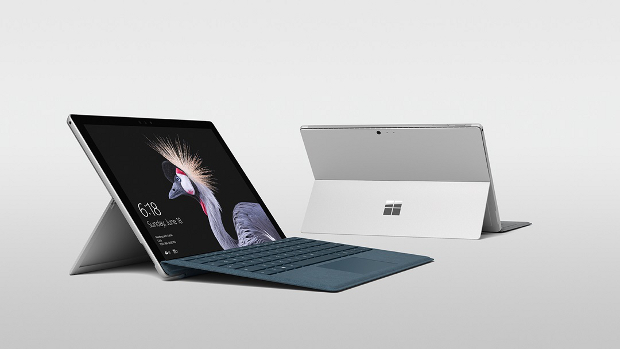 In my last post I criticised Microsoft’s strategy for the Surface Laptop. For me it’s a case of decent hardware chained up by an operating system that nobody will care about by this time next year. Priced the same as any ultra-portable laptop but said to compete against low-cost Chromebooks, the vision of ‘premium price, middling performance’ won’t find fans anywhere. It reminds me of Windows RT and, by extension the first-generation Surface tablet and that’s just a hop, step and a jump to the real subject of this post: the Surface Pro.
In my last post I criticised Microsoft’s strategy for the Surface Laptop. For me it’s a case of decent hardware chained up by an operating system that nobody will care about by this time next year. Priced the same as any ultra-portable laptop but said to compete against low-cost Chromebooks, the vision of ‘premium price, middling performance’ won’t find fans anywhere. It reminds me of Windows RT and, by extension the first-generation Surface tablet and that’s just a hop, step and a jump to the real subject of this post: the Surface Pro.
I’ve been a fan of the Surface Pro since its first edition in 2013. The ‘better than a tablet, not quite as good as a laptop’ space the Pro worked in suited me fine to have one as a second machine for covering live events – so long as I didn’t have to put it on my lap. It wasn’t until the third iteration that the Pro really came into its own with a slim design and enough spec to outpace most business laptops. The only criticism I would level at the Surface Pro since its third edition is that it has left the tablet space so far behind that its competition isn’t with the iPad but with ultrabook PCs. The Surface has the appeal of a tablet form factor but the use model is pure productivity over casual use.
This week’s Surface Pro announcement did two things. First, it showed that there’s plenty of life in the existing form factor. Second, it shows that Microsoft has no intention of reinventing the Surface Pro for the mid-market. If anything, its competition isn’t the MacBook, but the MacBook Pro.
It’s a sound strategy and there are six price points, starting at €959 and finishing up at over €3,100 to cover the gamut of the PC market.
There is one thing about the Surface Pro as it leaves behind its numbering convention that could stall its uptake: blended reality applications.
Microsoft’s Windows Creator’s Update has promised a massive expansion of augmented and virtual reality. Central to this strategy are capable software and capable hardware partners interested in PC and visor development.
The Surface Pro is a productivity device first but Microsoft has stretched its definition of ‘productivity’ to include the creative arts and blended reality is inevitably going to become a significant part of that sector. I’m not saying we should be connecting an Oculus Rift to the Surface Pro – most PCs would struggle with that kind of usage – but we have to see where low-end VR apps sit in this product line.
If the Surface Pro is going to challenge at the premium end of the PC market, it will have to demonstrate an appetite for emerging tech.







Subscribers 0
Fans 0
Followers 0
Followers